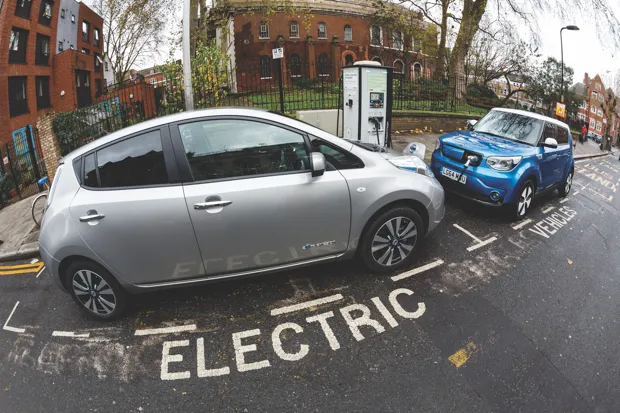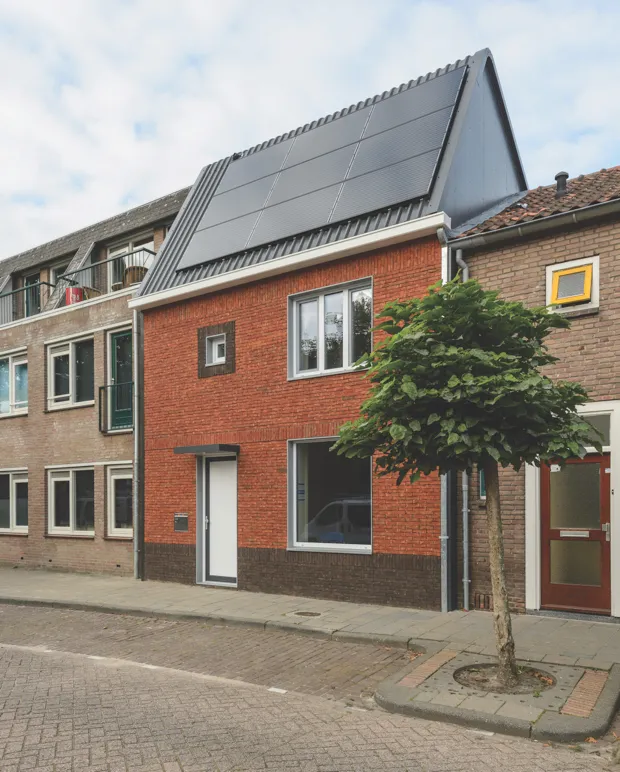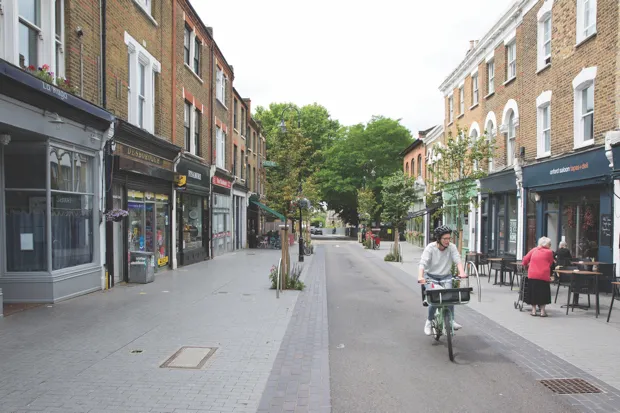On Monday 8 October 2018, the Intergovernmental Panel on Climate Change (IPCC) issued a report that said not enough was being done to avoid the worst consequences of global warming. It contained a stark yet simple warning: the most severe effects of climate change can be reduced if we limit the rise in global temperatures to 1.5°C above pre-industrial levels. But doing so will require rapid and far-reaching changes.
It’s no surprise that one of those changes required, perhaps the biggest, is the shift away from fossil fuels. We need to significantly increase the use of alternative fuels in order reduce our carbon footprint; climate scientists have been saying as much for years. And the simplest way of doing this would be for us to ‘go electric’, especially in our cities where the concentration of people and energy demand are highest.
“Electrification is one route,” says Stephen Hall of the University of Leeds’s Centre for Climate Change, Economics and Policy. “The reason for that is the electricity grid will accept any form of electricity so long as it’s of the right power quality… [whether it’s] from intermittent renewables [solar and wind] or prime renewables like biomass.
“I think the electrification of cities is probably one way to provision us with the sort of energy services we’re used to in a low-carbon fashion.”
Read more 2019 science breakthroughs:
The electrification of our cities is already taking place, most notably on the roads. Electric vehicles are becoming an increasingly common sight as they make the most sense in places where the majority of journeys are short. And, although they are expensive to buy compared to equivalent internal combustion engine vehicles, we’ll be seeing more of them in the years to come. Why? Partly because they’re necessary; partly because more manufacturers are shifting their focus to electric vehicles exclusively; but also because there are financial benefits to owning one.
In the UK, electric vehicles that retail for less than £40k are exempt from road tax; there’s no fuel duty to pay on the electricity they use; and the VAT on recharging with electricity at home is five per cent, as opposed to the 20 per cent you’d pay refuelling at a pump.
Despite all this, the switch to electric vehicles isn’t happening fast enough. And, in the wake of the IPCC’s report, MPs called for the ban on the sale of new petrol and diesel vehicles to be pulled back from 2040 to 2032. Whether the date for that ban will change was undecided at the time of going to press. Nevertheless, Hall expects further, more visible changes to the road network in the years ahead to encourage not only the switch to electric vehicles but also a reduction in vehicle use overall.
“It’ll be really obvious stuff like more two-plus [passenger] lanes, and more bus lanes (and you can drive in some bus lanes if you’ve got an electric car). More low-emissions zones are coming as well, but if you’re in an electric car you can drive through them for free.”
Charges and recharging
Currently there are low emissions zones in London, Brighton, Norwich, Nottingham and Oxford, but it’s only in London that the cost for entering the zone is applied to vehicles other than buses. That may change soon, however, possibly with Bath leading the way –its local council is proposing a scheme in which motorists pay a £9 ‘clean air charge’ to drive into the city centre from 2020.
Financial incentives and new road layouts aren’t all that’s required to hasten the switch to electric vehicles, though. Changes to our infrastructure will be needed in order to keep them running, because charging electric vehicles takes time – it’s getting faster, but charging a battery still takes considerably longer than filling a fuel tank.

Charging at home overnight is therefore the most convenient option and some car manufacturers will install a charging unit for free when you buy one of their vehicles. But that relies on you having off-street parking and nearly one third of British car owners, many of whom live in cities, don’t have that luxury. Catering to that third will result in another change: a growing network of public charging points.
The increasing proliferation of public charging points may be more subtle than you might expect, however, asmany of them will be integrated into existing lamp posts to keep ‘pavement furniture’ to a minimum.
Helping that network grow are government grants, available at the request of your local authority, to have on-street charging points installed in residential areas. There are further subsidies available to employers that wish to have charging points installed in the car parks attached to their premises.
Facilitating these changes in our cities will require changes in other areas too, most notably on the east coast where the massive Hornsea One and Two wind farms are currently under construction. They are expected to come online between 2020 and 2022, by which time construction of a nearby Hornsea Three wind farm is hoped to be underway.
“Electric vehicles are a great place to put that wind energy during the night when nobody else is using it,” explains Hall. “Electric vehicles put a demand on the system during the night when otherwise those new renewable power producers would have to accept a lower price because demand is lower on the system. So electric vehicles and offshore wind in particular are best friends.”
The drive for cleaner air
‘Going electric’ doesn’t solve all our problems, however. There’s growing concern over the health implications of air pollution, which is believed to be linked to approximately 40,000 premature deaths annually in the UK. And while switching to electric vehicles takes engine emissions out of the equation, it might not be so helpful when it comes to particulate matter, as Rachel White, the senior policy advisor for Sustrans points out.
“The issue with this is that in London (where there’s good data), 45 per cent of particulate matter (of which the WHO says there are no safe levels) actually comes from tyre and brake wear. And that isn’t really addressed at all by electric vehicles… [T]he regenerative braking of electric vehicles may see a reduction in brake wear but the fact that electric vehicles are heavier, because they have heavy batteries, means you’re more likely to see an increase in particulate matter from tyre wear.”
And, as White says, it’s not just air pollution that needs addressing; our health in general is in decline due to inactivity. “[In September,] The Lancet published a report that basically found that 1.4 billion adults across the world – about a quarter of the world’s adults – are doing far too little exercise and that this is the only area in which we’ve got a health problem that’s getting worse. Problems in other areas, such as diseases, are generally improving. And they found that the easiest way of addressing this problem was to incorporate infrastructure for cycling and walking.”
Which is why Sustrans is pushing for a slightly different approach to changing our cities.
“What Sustrans is saying is that we don’t just need cleaner vehicles, we need fewer vehicles… We believe electric vehicles have a role to play because we’re not going to get rid of cars entirely –there are certain journeys that need to be made by car… But we’re seeing the air pollution crisis as an opportunity for town planners and cities to rethink the way that towns and city centres are organised and how people can move around them differently.”
In short, change is needed in our cities and, to a certain degree, it’s already occurring. But it’s not actually the cities themselves that need to change, but the way we travel around them.
Home improvement

Electric vehicles put a relatively small demand on our power supply. The biggest comes from heating our homes. There are low-carbon heating technologies we could implement (air-source heat pumps and combined heat and power networks, for example) that wouldn’t require massive changes to the gas pipe infrastructure. But although heat pumps are greener and more efficient than existing methods, they don’t deliver as much heat, so for them to be a practical alternative we’d need better insulated homes.
One affordable way of getting them was trialled in Nottingham in 2018. Based on the ‘Energiesprong’ model developed in the Netherlands, it involves installing prefabricated insulated facades and roofs with integrated solar panels to houses.
The makeover results in a ‘net zero energy’ house that, according to Energiesprong“generates as much energy as is needed to heat it, provide hot water and power its appliances”.
The scheme is geared towards the social housing sector and achieves its funding via the savings the refurbishments generate. So if a tenant is paying £2,000 for their annual energy bill before the installation, they continue to pay that amount afterwards but instead of that money going to the energy supplier, it goes towards paying off the cost of the refurbishment. In the meantime, the tenant’s home is being heated and powered more efficiently and with less environmental impact.
Going Dutch

The number of cars on our roads needs to be reduced and one way of doing that is to make cycling a viable alternative to driving. The ‘Mini Holland’ programme in London is an attempt to do just that by mimicking the bicycle-friendly infrastructure in the Netherlands, where approximately 27 per cent of all journeys are made by bike.
In 2013, three boroughs – Enfield, Kingston and Waltham Forest – were selected to share a £30 million grant to make changes to their roads, pavements and cycle paths to increase the number of journeys made by bike or on foot.
It didn’t take long for the changes to have an effect. According to research, the number of residents making journeys by bike grew from 12 to 17 per cent between 2015 and 2016. A more recent study published in Transportation Research in 2018 found that the average time spent on active travel (walking or cycling) per week in the three Mini Holland zones had increased by 41 minutes since the changes.
The Mini Holland programme is due to be completed by 2021. If the improvements seen in the three test boroughs are maintained, or increase, it’s likely to be rolled out to more areas across London and the rest of the UK.
